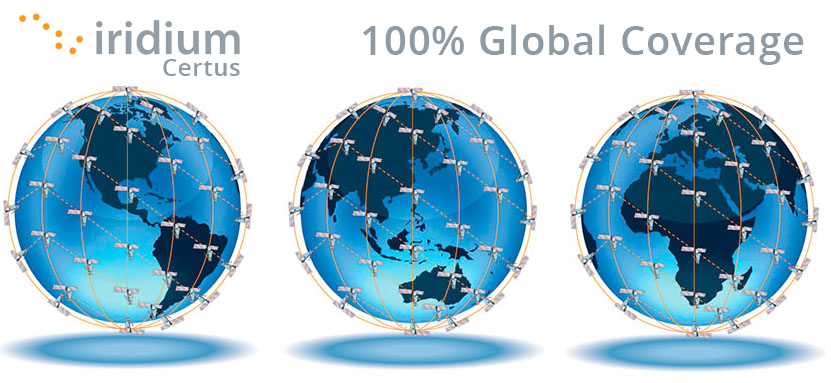In 1998, seemingly, history was created by a company called Iridium Satellite LLC by launching a “Satellite Communication System” that would allow anyone from anywhere on the planet to directly talk to just about anyone else anywhere on the planet, even if they were in the middle of the “Sahara Desert” or the deepest portions of “Amazon Forest”, using hand held devices that would relay the entire communication through 66 active satellites in low orbit of earth. This technology set the entire technological world in a “High Tech” dizziness and was launched with such fanfare that the first call using this system was done by none other than the Vice President of US then.

And in August 1999 (not even a year after its launch) Iridium Satellite LLC filed for bankruptcy.
A service that took 13 yrs of project work and USD 6 Billion of investment, collapsed just short of 10 months after its world-wide launch.
How could something go so terribly wrong and that too for 13 yrs without being caught?
Let us have a look at this project and why it made it to the PM-Pulse list of the worst projects ever.
The original Idea was brilliant from a purely technical perspective. Imagine a world that does not need any kind of ground establishment like towers, wires and cables for communicating to anyone anywhere in the world. All you needed was a hand-held device that would relay (bounce off) your communication from the nearest “Iridium Comsat” orbiting low around the earth, which would than figure out whom you wish to talk to and then relay that call to the Comsat nearest to that other person and finally to the hand-held device of that person, and all that in such a short period that the latency would not even be felt by the user. If you were stranded on an island you could call for help, if you were lost in the densest forest you could find your way out or call for an evacuation, hell, you could even call up from Mt. Everest and guess what, from there the latency would be even lower.

However a good idea alone is not everything. Unfortunately, as is the case with many such projects, this project too relied heavily on the “Technical Aspects” of the project without much of a “Benefit Cost Analysis” or any kind of a Market survey. What was the most amazing part, was that Motorola became partners to this company and partially bankrolled this project.
As the years progressed, this project ran from one technical hiccup to another. In the absence of any proper planning, the preventive and forward planning, risk management and business benefits took a back seat while knee-jerk reactions to situations, Hyper hyping of the technical solutions, issues handling, fighting for more funding and technical issues (without going too deep into viability and relevance) and meetings for finger pointing took the front seat.
Even the organization structure, which they kept essentially as a Functional Organization, did not match the project oriented flavour of the initiative and ended up creating a lot of issues with the decision making, approvals and suffered terribly from “Silo” effect.
Despite all this, the technical idea was simply brilliant and at the end of the day all the project stakeholders were too focused on this amazing satellite communication and the launch of satellites into low orbits that they did not even notice the “Environmental Changes” happening around them. GSM technology (ironically also spearheaded by Motorola) was catching up and providing reasonably good connectivity. GSM network was not that great back then. Besides terrorism and drug cartels were increasingly using more and more sophisticated communication technology to escape eves-dropping by regulatory bodies and this had made most government excessively warry of those technologies that could not be easily regulated. Obviously several Governments were warry of Iridium.
The most amazing oversight in this entire project was that hardly any substantial pricing survey were done before launch. Since the initial capex of the project was so high (specifically due to launching 66 satellites creating a network of comsats around the planet covering each and every inch of the Earth from communication points of view) that the pricing for their services was just too expensive and untenable. The word “Expensive” is a relative term and well it was too expensive compared to the GSM and the other fixed line costs expenses, so what if the Iridium service had amazing reach.

By the time the project was handed over to operations, instead of the total of 77 satellites, they managed to send up only 66 satellite of which 3 did not work properly, this resulted in the huge blackout zones on large parts of the earth where this service was not available or at best intermittently available based on the “Satellite Passing Over That Area”. By the time this technology was launched it was already excessively old and stale. While people were used to small hand-held devices, Iridium was providing a “Brick Sized” and just as heavy hand-held device that had notoriously low battery time and excessively high cost. During the blitz of satellite launches, a proper proof of concept was also note done but merely theoretically simulated. And the worst mistake of all (again being too technically excited without looking at the business model) was that their network in space was a “Stand-Alone” network, which meant that neither they could call any other service from Iridium nor could they rent out “Satellite Com Space” to other service providers on a “pay-per use” manner.

Despite a USD (approx.) 100 Million marketing and awareness campaign, the total numbers of subscriptions were just 10,000 instead of the minimum of 53,000 subscriptions that they had guaranteed with the banks lending them money. Within 9 months of their operations, they defaulted on USD 2 Billion bank loan and hence had to file for Bankruptcy.
Another disaster struck, one of the Iridium / Motorola Satellites collided with a Russian satellite thus creating a cloud of space debris that damaged a host of other satellites of other countries and purposes. This happened because, in their hurry to launch the satellites, the waiting period for “Placement of Satellite Space Area” was not adhered to which resulted in the satellites crossing paths and bang. Not to mention the near political meltdown as the cloud of cold war had still not evaporated completely.
In 1999 when Iridium filed for bankruptcy, Motorola was unable to maintain the spiralling costs of 66 satellites (highly outdated) and decided to fire the “Slow-Down” thrusters on each of them, one at a time, to let them fall to the earth and get burnt up during re-entry.
Fortunately a group of shark investors came in and struck a deal for acquiring ownership from Motorola by paying just USD 35 Million.
As it stands now, all the satellites have been replaced by new ones, by using SpaceX launch capability and now they have a huge numbers of subscribers only from Infrastructure, scientist, explorers, and shipping industries etc. who wish to use this service as a back up in case of disaster or emergency.
Talk about everything going wrong for a project.
Serious lessons can be learned from this debacle.